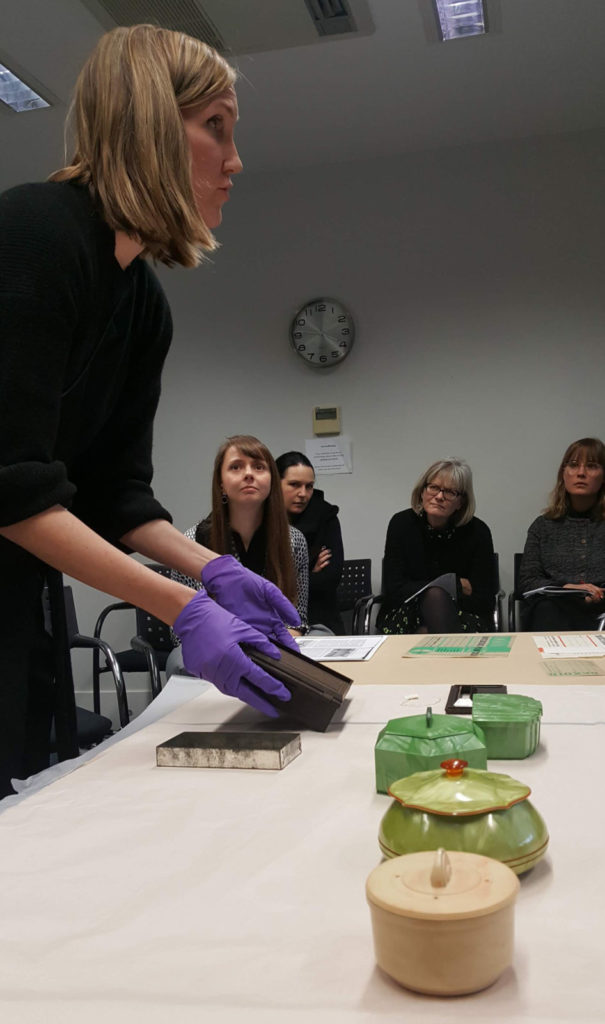We go behind the scenes for an introduction to plastics in the V&A Collections
On our visit to the V&A Museum we were delighted to be introduced to the team of curators and collections specialists including Dr Brenda Keneghan who started us off with an introduction to the history and development of plastics. I was very interested to learn the various differentiations between plastic types, starting with natural forms (those that involve any heat-able and mouldable material, including horn and shellac), to those that are fully synthetic and what we more readily recognise as plastics today (such as Nylon and Perspex).
The second part of our visit allowed for viewing of objects and booklets from the V&A Collections. The mixed array included items of original packaging and brochures that were used for sales and promotion of Bexoid and Lactoid plastic products by the British Xylonite Company. A lovely example of creative promotion of one’s material was illustrated in a 1936, spiral-bound “BEXOID – Special Purpose Material” booklet where the cover included a minutely detailed sheet of patterned plastic. The patterning provided a frost-like effect, casting a semi-transparent appearance over the title sheet below. The cut-out shapes were designed to line-up over the text on the sheet below.
Some of my favourite pieces in the collection were the striking green powder and dressing-table boxes. These were simple in style, featuring geometric lines and smooth curves in line with the Art Deco style of the 1930s period in which these items were made by Halex Ltd of Hale End in Walthamstow (also a part of British Xylonite Company). The addition of lead phosphate particles was said to have been added to achieve an organic looking sheen, imitating the look of iridescent jade or marble.

As has been highlighted through our various visits to museums and archives, the older plastic objects have been showing signs of plastic disintegration, a concept that is not widely recognised – with many people assuming that all plastics last forever!
Some of these signs included cracking at the bottom of a pot, and oozing of a powdery substance on the lid of another. Even the lovely BEXOID spiral-bound booklet’s plastic cover had shrunk in size. The timeline for such objects is clearly limited and it would appear that deterioration of these can only be slowed down (using airy storage spaces and charcoal cloths) rather than entirely prevented.
Once again, engaging with a valuable museum collection gave us a bigger picture of plastics, both at its material level and in its introduction to our everyday lives.

